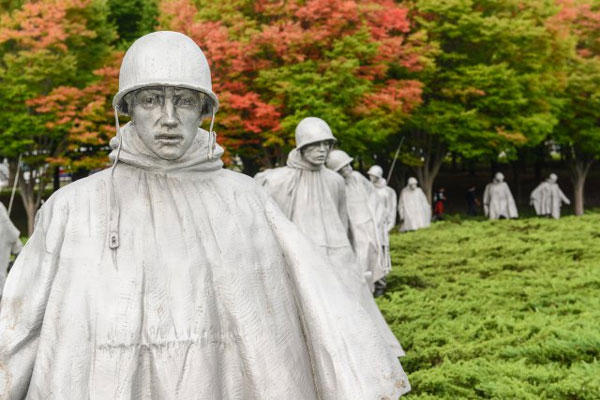
In 1952, Lou Kueltzo, a 17-year-old high school graduate from Forest Park, joined the military at the Oak Park Post Office. By Christmas, he was a Navy petty officer third class, freezing on the deck of a destroyer off the Korean peninsula.
Whenever a pilot plunged into the water near his ship, the USS Hazelwood, Kueltzo was part of a crew that raced to his aid in a rescue boat. Once, after saving a pilot’s life, the beaming man asked what kind of ice cream they liked. The next week, the Navy sent two 25-gallon steel tubs of strawberry and chocolate ice cream to the ship. “Ice cream was a real commodity back then,” he said.
“(The pilot) had a 2-mile wide smile, and said ‘Am I happy to see you guys,’ ” Kueltzo said. “Minutes seem like hours and hours seem like days when you’re floating, waiting to see if they’ll get to you in time.”
After about eight months, the war ended in an armistice, and Kueltzo went home. Expecting a big welcome home from the American public, he and other soldiers were greeted with silence. More than 36,000 servicemen died, but it was like the war never happened, said Kueltzo, who now lives in Aurora.
“When the guys were coming home from World War II, there was a lot of advertising and the news reels were giving you all the updates what was going on in the war, and in New York guys were running up and down the streets,” he said. “We didn’t have anything like that. There was nothing. That’s why they called it the forgotten war.”
Honor Flight Chicago, a nonprofit that flies local World War II veterans to Washington, D.C., for a free whirlwind daytrip to national war memorials to honor their service, announced Wednesday that it would open 2016 flights to Korean War veterans in April.
Mary Pettinato, CEO and co-founder of Honor Flight Chicago, said Korean War veterans such as Kueltzo never received the hero’s welcome they deserved. “We need to honor and recognize them before it’s too late,” she said.
An estimated 35,000 Korean War veterans live in the Chicago area, and more than 1,200 have already filled out their Honor Flight Chicago application, Pettinato said.
Flights open to Korean War veterans this year are April 13, May 11, June 8, July 13, Aug. 10, Sept. 7 and Oct. 5. The organization will continue to serve any World War II veterans who have not yet made the trip.
After an early morning flight from Midway Airport, Honor Flight Chicago and a group of active-duty military volunteers escort veterans to the national monuments built in their honor. They visit the World War II, Korean War and Vietnam War memorials, as well as the Smithsonian’s Steven F. Udvar-Hazy Center. Hundreds show their appreciation throughout the day and at a ceremony for the veterans at the World War II memorial that features bagpipers and a color guard. By 8:30 p.m., their return flight lands in Chicago.
Pettinato said many veterans say the experience is one of the best days of their lives, and that there are plenty of surprises along the way.
“It’s all about the different ways to say thanks all day long,” she said.
In 1950, communist North Korea, supported and advised by the Soviet Union, invaded democratic South Korea. The United Nations, using mostly U.S. troops, struck back. The fighting ceased three years later, and the line drawn between the two countries, or the demilitarization zone, is still there today. For the U.S. military, it was the first integrated war and had the first use of helicopters and jet planes. New frontline army hospitals known as Mobile Army Surgical Hospitals, or MASH units, saved countless lives during the war.
Tom Cafferty, 86, who served as an Army medic in the 1st Cavalry Division during the Korean War, said he is looking forward to seeing the names and the statues on his honor flight later this year. During the war, his job was to build roads and lay mines.
“It’s going to be heartwarming in one way and sad in another,” he said. “I’ll have a good time there.”
Kueltzo, 81, who filed his application in 2008, is eager to meet fellow veterans. They’re part of a special fraternity, he said.
“Us veterans like to talk about the good times more than the bad,” he said. “You know you’ll be able to sit down and talk, and they know how you feel and why you feel the way you do.”
Thanks to Matt McCall of the Chicago Tribune.
Go to www.TADPGS.com, click on the “Looking for People” tab, then view “Veterans Solutions” to see more for information on our Veterans Solutions for Employers. Please join our LinkedIn group, Veterans Hiring Solutions for Veterans at http://linkd.in/Sg346w. If you have specific questions about hiring veterans or the incentives for doing so, contact me at Ben.Marich@Adeccona.com.

